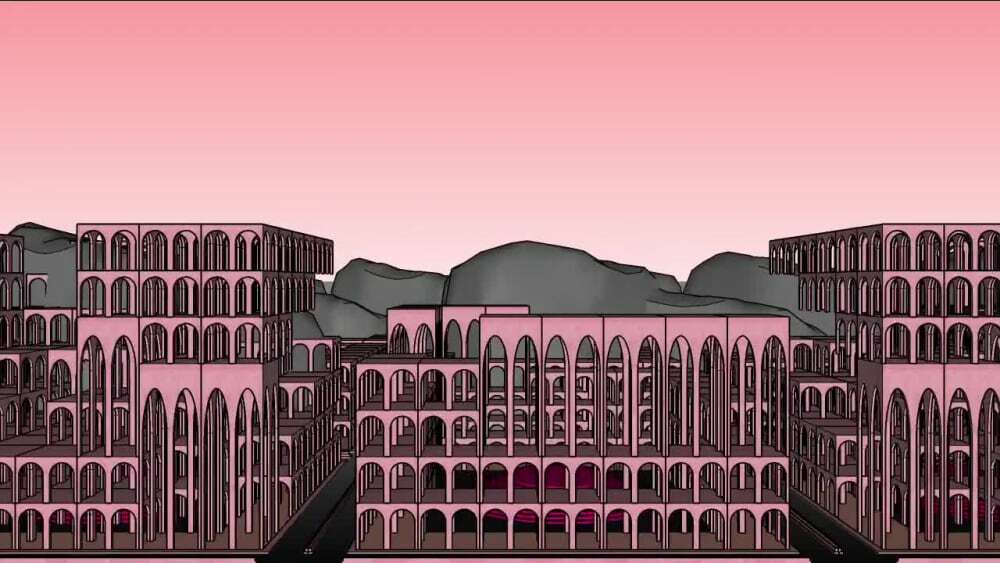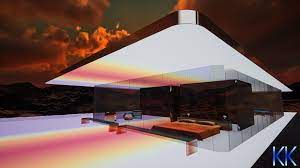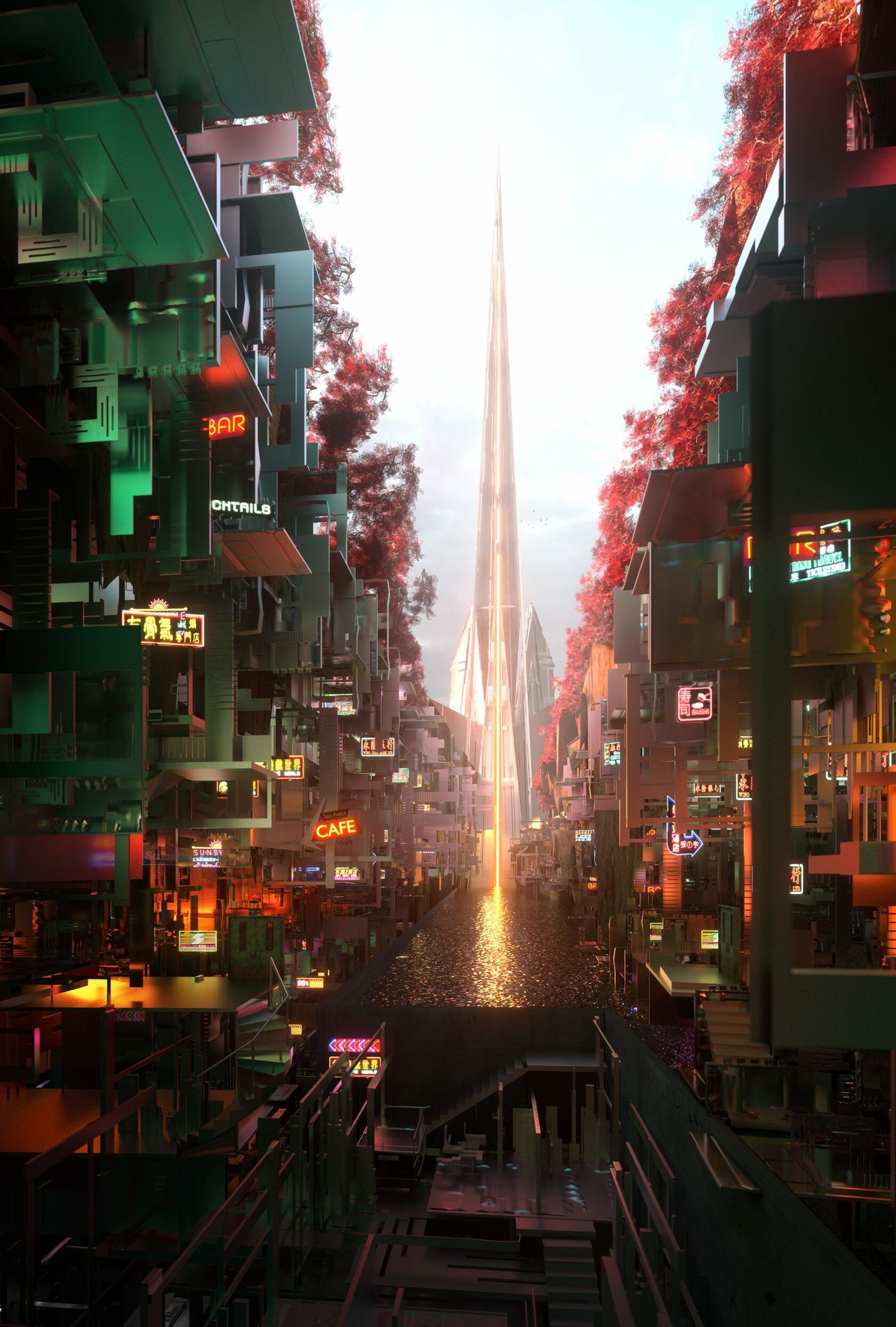Metaverse 3D models as a property and the actual environment in the Metaverse are the most important component in designing the metaverse, the development of the NFT market, which is the most important decentralized asset backed by cryptocurrencies.
Professionals in 3D modeling, 3D artists, 3d architectural studious, and CGI studious are the most important in creating 3D products for NFT. But despite this, 3D concept artists, physical fabricators, architects, and designers can use the NFT Marketplace too. They only need to convert their 3D computer graphics, CGI to NFT, and upload it to their gallery of works. Immediately after that, they can already claim real profits from their work through the NFT Marketplace and be listed as a creator in this market.
What is Metaverse?
NFTs, Cryptocurrency, Virtual reality conversation, and many other quickly as possible words which have yet to be extended to the wider population are all part of the Metaverse.With all its intricacies and magnificence, the Metaverse is essentially a technological realm in which everything that we can think of could happen. That's a technological horizon in which we may communicate in a 3D virtual environment first from the comfort of our own homes. It is intended to have been a truly interactive 3D setting in which structures, paintings, audio, and interpersonal behavior also can be technologically represented.

What are NFTs?
Exchangeable cryptographic currencies are equivalent and could be exchanged for many others, such as Bitcoins. Non-fungible Tokens (NFTs), on the other hand, are one-of-a-kind and permanent digital currencies. Because of its non-fungibility, NFTs are a great idea to maintain track of a technological investment's possession histories, keeping it 'original' inside the meaning as an only legitimate duplicate existing and therefore only single user. Although NFT-based materials could still be duplicated well over the web, the design can only really be sold by the original purchaser. This is awesome news for creative professionals, who will now rest guaranteed that they will be compensated for their NFT-based work.Metaverse 3D models: why they’re so important in NFT Marketplace
NFTs are clearly changing the way people think about video games and also in monetary stimulus. Cryptocurrency videogames get the power to boost the entertainment business since non-fungible coins, as the title indicates, are individual and may be structured to keep significance further than the play in which they would be produced.
Properties that accompany the gameplay, including personalities, chatbots, music sounds, roadways, and so on, could now be readily built as NFTs in 3d metaverse space.
Gameplay components transformed to NFTs would change the 2-dimensional corner planets inside out by providing a spectacular experience of your favorite shows in 3d metaverse space to 2D corner realms. Rather than just being constrained to the subtleties of digital art, one will now see greater lifelike emotions and movements.
3D NFTs are propelling the Metaverse, the next development of the Web. It's about more than just games or enjoyment, as the banking sector wants to incorporate Metaverse within existing economic practices to benefit all its economic prospects.
In addition, the usage of 3D NFTs in architecting the metaverse can aid in the creation of a platform for individuals to communicate, socialize, engage, develop, and join in distributed economics with larger systemic ramifications.
Especially significantly, NFTs in 3d metaverse, 3D modeling would be a key player in the safeguarding of crypto assets.
3D NFTs are embedded in a manner to enable identify the private data holders, allowing metadata control functions more transferrable and accessible, ensuring the secrecy of new automation materials.
A 3D modeled, non-fungible currency is a unique cryptographic product that may be utilized to improve the safety and confidentiality of crypto assets in the defense arena. As a result, using 3D metaverse NFTs to control web applications creates a first and unique identifier for metadata that is being used to process the transference, maintenance, and authenticity of confidential documents.
Architecting the metaverse and NFT
With the rise of NFTs and their implications for architecture in the Metaverse, there are new benefits for professionals in the fields of architecture, engineering, creativity, and 3D modeling. Architects have new prospects in the metaverse, while developers are making a profit with NFTs.
"NFT" is the hottest topic in technology, so it should be no surprise why Collins Dictionary named it just the phrase of a year.
Here you can see the "Mars House," a simulated interactive 3d homemade by designer Krista Kim that was auctioned for a whopping $500,000.

Although the 3d virtual property is indeed not particularly dynamic, it represents a new phase in building form. Architecture is becoming more dynamic and lifelike as the metaverse evolves, thanks to NFTs, which have developed a new blend of imaginative construction.
Traditional and meta architects
It's unable to dispute that architects perform a crucial role in the implementation of architecting the metaverse by creating metaverse 3D models and other metaverse-based creative projects. Consumers demand interactive architecture projects sites in the 3d metaverse, which necessitates the hiring of professional architects for architecting the metaverse and designers for designing the metaverse for developing or improving those locations. That's why, as the 3d metaverse sites are expanding and 3d metaverse is growing, getting more investors, those we regard to be professional architects will also most likely alter. Due to the obvious transformation of architecture and architecture projects, it's possible that we'll have differentiation between titles of architect and architect for 3d metaverse emerge through time. Real-life normal architecture is essential for creating housing and allowing our everyday routines, but architects in the metaverse will focus solely on the metaverse 3D models, 3D structure, geometry in 3d-dimensional virtual space, and CGI-generated visuals.
Constructing for the 3d metaverse could necessitate fresh talent and a transformation of viewpoint for architects. Architects in the metaverse must undertake metaverse 3D models and incorporate specialized information from a range of professions, covering graphic design, content, concept art, and sometimes game elements. And it will introduce a large number of individuals to the realm of architecture. 3d architectural studios could include a broader range of gameplay software engineers and designers. This innovative architecting of the metaverse will involve a larger number of professionals.
Aside from that, architecture training in architecture would need to educate this next generation of architects on a range of virtual techniques and 3D technologies. This results in a transformation way from traditional architecture, building works, and resources.
By providing a completely unreal world habitat that does not require strong existence, the digital metaverse setting is being used to strengthen the communication between trainees and their lecturers and tutors. A realistic paradigm for establishing dynamic interactions would be offered, which may be applied through any design school.
In addition, the metaverse may mark a growing paradigm in architectural preservation. Because some structures have been destroyed by environmental or human disasters, the metaverse could serve as a basis for preserving properties for upcoming humans in the next centuries in the form of virtual metaverse 3D models of architecture. This could be thought of as a technique to represent and examine architectural history by allowing people to engage with the surroundings and do so in a virtual setting.
Conclusion
The metaverse is an undiscovered realm that grows and develops for architects, as well as heaven free of such limits of the external reality. Architects possess people to manage and control and execution of their projects. Those who enjoy collecting each item, users also can develop NFTs, which are unique art antiques. Architects could also build interactive property items such as decorations for interior and exterior spaces and turn those into comprehensive towns, which they can then offer in-game reality, applications, and pictures. Organizations could now offer electronic experiences and services in the market. It may be pretty hard to find consumers which respect your architecture in your location, but it is so much easy enough to find consumers who respect your aesthetic all over the world.The development of the 3d Metaverse is a massive earthquake for architecture, and also the height is really not the rule when it comes to their ideas. Also with the necessary equipment, such as Blender, 3Ds Max, Maya, ; Substance Painter, and integrated development environments Unreal Engine, a professional could easily step into the role of visual scenario creator throughout this new media. For architects, these open up an entire world of possibilities. Their capacity to imagine, alongside their technical knowledge, would be enough to get them started in this technology-driven world. Then again, it's the architects and developers who can maximize the potential of creative expression to create a digital environment as complicated as such reality.



